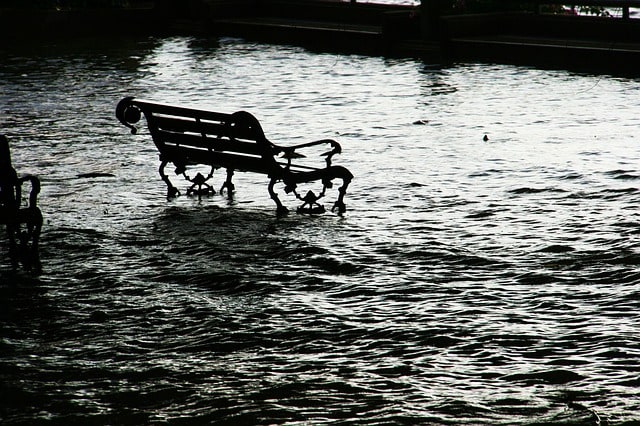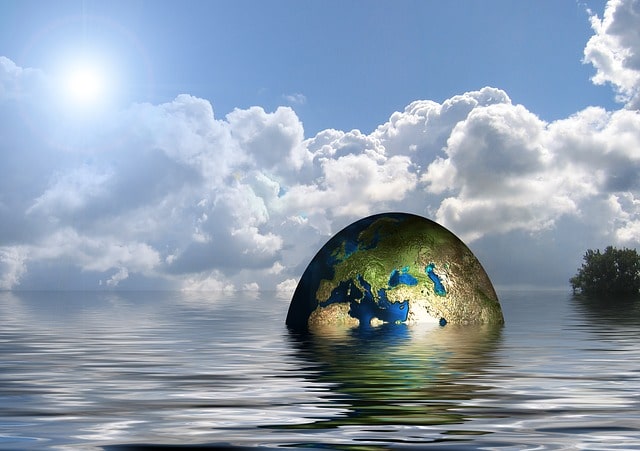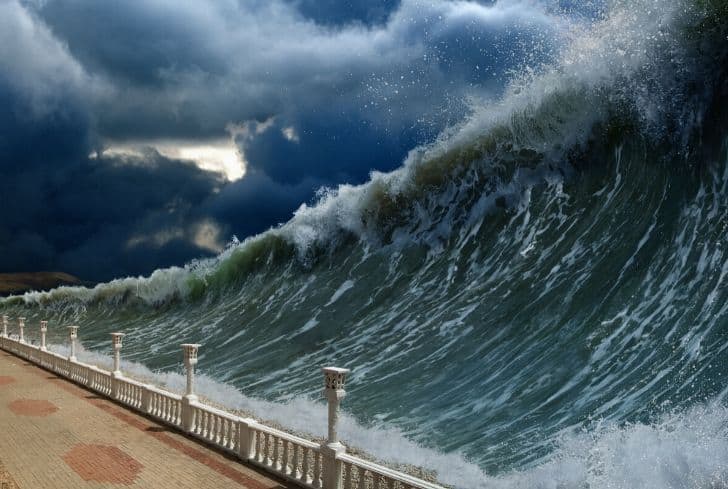What is a Flood and What Causes Flooding?

Floods are natural occurrences where an area or land that is normally dry abruptly becomes submerged in water. In simple terms, flood can be defined as an overflow of large quantities of water onto a normally dry land. Flooding happens in many ways due to overflow of streams, rivers, lakes or oceans or as a result of excessive rain.
Whenever flooding takes place, there is the possibility of loss of life, hardship to people, and extensive damage to property. This is because flooding can carry bridges, cars, houses, and even people. Flooding also destroys crops and can wipe away trees and other important structures on land. Some floods occur abruptly and recede quickly whereas others take several days or even months to form and to recede because of variation in size, duration, and the area affected.
According to Wikipedia, “A flood is an overflow of water that submerges land which is usually dry. The European Union (EU) Floods Directive defines a flood as a covering by water of land not normally covered by water. In the sense of “flowing water”, the word may also be applied to the inflow of the tide.”
Causes of Flooding
Many conditions result in flooding. Hurricanes, clogged drainages, and rainfall are some of the conditions that have led to flooding in various regions across the globe. Here are the leading causes of flooding.
- Rain
Rain is the leading contributor to most of the flooding cases witnessed across the world. Too much rain causes water to flow overland contributing to flooding. In particular, it is due to high rainfall intensity over a prolonged period.
Depending on the rainfall distribution, the amount of rain, and soil moisture content, short rainfall period can also result in flooding. Light rains for longer periods – several days or weeks, can also result in floods. The rain water erosive force can weaken the foundations of buildings, causing tumbles and cracks.
- River Overflows
Rivers or streams can overflow their banks. This happens when the river or stream holds more water upstream than usual, and it flows downstream to the neighboring low-lying areas, typically referred to as the floodplains. As a consequence, this creates a sudden discharge of water into the adjacent lands leading to flooding.
Dams in rivers may also at times overwhelm rivers when the carriage capacity is exceeded, causing the water to burst and get into the floodplains. Flood caused by river overflow has the potential of sweeping everything in its path downstream.
- Lakes and Coastal Flooding
Lake and Coastal flooding occurs when large storms or tsunamis causes the water body to surge inland. These overflows have destructive power since they can destroy ill-equipped structures to withstand water’s strength such as bridges, houses, and cars.
In the coastal areas, strong and massive winds and hurricanes drive water onto the dry coastal lands and give rise to flooding. The situation is even worsened when the winds blowing from the ocean carry rains in them. Sea waters from the tsunami or hurricane can cause widespread damage.
- Dam Breakage
Dams are man-made structures used to hold water from flowing down from a raised ground. The potential energy stored in the dam water is used to generate electricity. At times, the walls can become weak and break because of overwhelming carriage capacity. Due to this reason, breakage of the dam can cause extensive flooding in the adjacent areas.
Flooding occurs when the embankments built along the sides of the river to stop high water from flowing onto the land breaks. Sometimes, the excess water from the dam is deliberately released from the dam to prevent it from breaking thereby causing floods.
- Melting of the Glaciers and Mountain Tops
In the cold regions, ice and snows build up during the winters. When the temperature rises in summer, the accumulated snows and ice are subjected to melting resulting in vast movements of water into lands that are normally dry. Regions with mountains that have ice on top of them also experience the same outcome when the atmospheric temperature rises. This type of flooding is usually termed as snowmelt flood.
- Clogged Drainages
Flooding also takes place when snowmelt or rainfall runoff cannot be channeled appropriately into the drainage systems forcing the water to flow overland. Clogged or lack of proper drainage system is usually the cause of this type of flooding.
The areas remain flooded until the stormwater systems or waterways are rectified. Instances where the systems or water ways are not rectified, the areas remain flooded until the excess water evaporates or is transpired into the atmosphere by plants.






